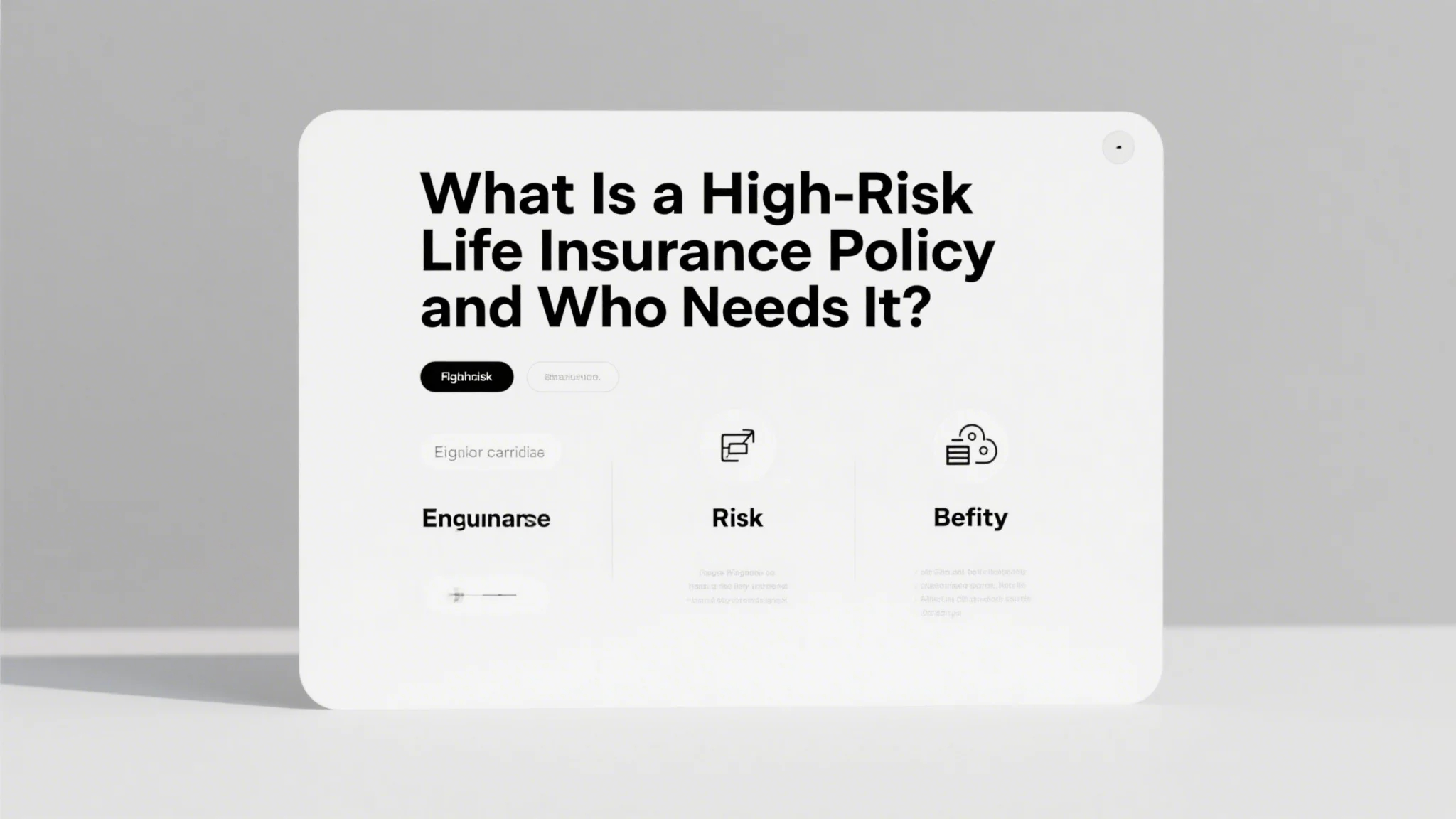Life insurance is a critical component of financial planning for many individuals and families. It provides a safety net, ensuring that loved ones are financially secure in the event of a tragedy. However, not all life insurance policies are created equal. For some people, obtaining a standard life insurance policy may be challenging or even impossible due to their health condition, lifestyle, or occupation. This is where high-risk life insurance policies come into play.

What Is a High-Risk Life Insurance Policy?
A high-risk life insurance policy is a type of life insurance designed to provide coverage for individuals who face a higher-than-average risk of death. These policies are often referred to as “high-risk” or “special risks” life insurance. They are tailored to individuals who may not qualify for traditional life insurance due to factors such as serious health conditions, dangerous occupations, or engaging in high-risk activities.
High-risk life insurance policies are underwritten by specialized insurance companies that assess the individual’s unique circumstances and determine the level of risk they pose. These policies may come with higher premiums, shorter coverage terms, or lower death benefits compared to standard policies. However, they offer a crucial safety net for those who cannot obtain coverage through conventional means.
Why Are High-Risk Policies Necessary?
Standard life insurance policies are designed for individuals who are considered “average risk.” This means they are in good health, have a stable lifestyle, and are not engaged in activities that could increase their likelihood of dying prematurely. However, not everyone fits into this category. High-risk life insurance policies are essential for individuals who fall outside of these parameters.
Serious Health Conditions: Individuals with chronic or life-threatening illnesses, such as cancer, heart disease, or HIV/AIDS, may find it difficult to obtain standard life insurance. High-risk policies allow them to secure coverage despite their health challenges.
High-Risk Occupations: People in professions that involve significant danger, such as firefighters, police officers, miners, or military personnel, often face a higher risk of death. High-risk life insurance policies are designed to provide coverage for these individuals, ensuring their families are protected.
Lifestyle Choices: Those who engage in activities such as skydiving, racing, or extreme sports may also be considered high-risk. While these activities can be thrilling, they increase the likelihood of accidents or fatal injuries. High-risk life insurance policies cater to these individuals by offering coverage that standard policies would not provide.
Genetic Predispositions: Individuals with a family history of serious health conditions or genetic disorders may also be considered high-risk. These individuals may find it challenging to obtain standard life insurance, but high-risk policies can offer a solution.
The Benefits of High-Risk Life Insurance
While high-risk life insurance policies may come with higher premiums and fewer benefits, they offer several advantages for those who need them:
Coverage When Other Options Are Unavailable: For individuals who cannot obtain standard life insurance due to health or lifestyle factors, high-risk policies provide a lifeline.
Peace of Mind: Knowing that your loved ones are financially protected can offer significant peace of mind, even in the face of serious health challenges or dangerous occupations.
Customizable Coverage: High-risk policies are often tailored to meet the specific needs of the individual. This can include shorter coverage terms or lower death benefits, depending on the circumstances.
Potential for Future Standardization: In some cases, individuals with high-risk factors may eventually transition to standard life insurance policies as their health improves or circumstances change.
Is High-Risk Life Insurance Right for You?
If you are in a high-risk category, it’s essential to evaluate whether a high-risk life insurance policy is the right choice for you. Consider the following factors:
Health Status: If you have a serious health condition, determine whether your condition is stable or if it may improve over time.
Lifestyle Choices: If you engage in high-risk activities, assess whether you are willing to continue these activities while maintaining life insurance coverage.
Financial Needs: Evaluate your financial situation and determine whether the higher premiums associated with high-risk policies are manageable.
Alternative Options: Explore other types of life insurance or financial planning strategies that may better suit your needs.
Who Needs a High-Risk Life Insurance Policy?
High-risk life insurance policies are not one-size-fits-all. They are specifically designed for individuals who fall into certain high-risk categories. Below, we explore some of the most common groups of people who may benefit from a high-risk life insurance policy.
1. Individuals with Terminal or Chronic Illnesses
For those diagnosed with a terminal illness or chronic condition, obtaining standard life insurance can be nearly impossible. High-risk life insurance policies are often the only option for individuals in these circumstances. These policies can provide much-needed financial protection for their families, even if their health is poor.
2. High-Risk Occupations
Certain professions inherently come with a higher risk of death. For example, firefighters, police officers, and military personnel face daily dangers that most people never encounter. High-risk life insurance policies are designed to protect these individuals and their families, ensuring that their loved ones are financially secure in the event of a tragedy.
3. Individuals with Dangerous Hobbies
Engaging in high-risk activities such as skydiving, racing, or rock climbing can significantly increase your likelihood of accidents or fatal injuries. If you pursue these hobbies, a high-risk life insurance policy may be the best way to protect your loved ones.
4. smokers or Individuals with a History of Substance Abuse
Smoking or substance abuse can greatly increase your risk of health complications and premature death. While these habits may disqualify you from standard life insurance, high-risk policies can still provide coverage, albeit at a higher cost.
5. Senior Citizens
As people age, their health may decline, and they may become more susceptible to illnesses or accidents. Senior citizens may find it challenging to obtain standard life insurance, but high-risk policies can offer a viable solution.
